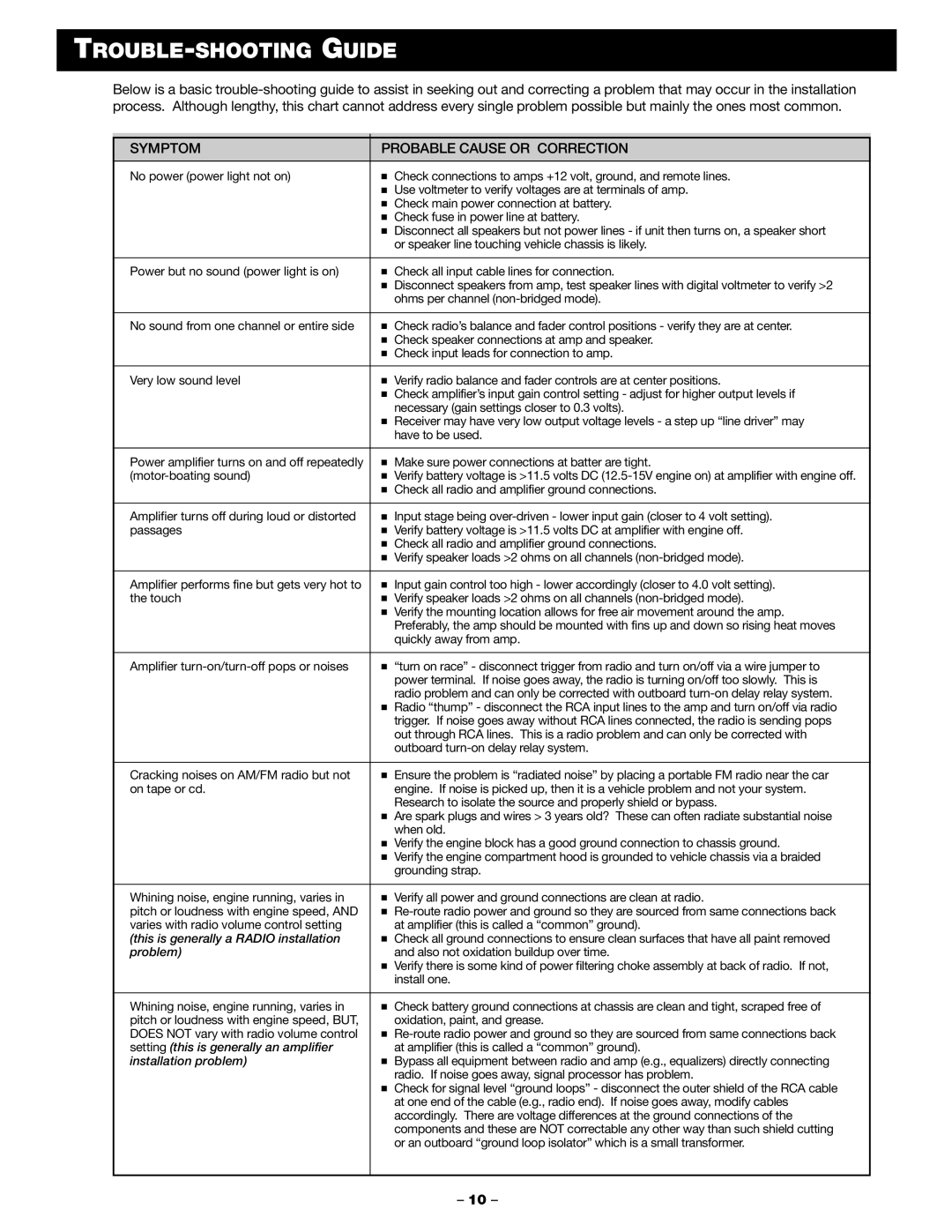PCA 2100, PCA 250 specifications
Blaupunkt is a brand synonymous with quality audio equipment, and two of its standout amplifiers are the PCA 250 and PCA 2100. These models have garnered attention for their impressive specifications and advanced technologies that cater to audio enthusiasts looking for top-notch sound performance.The Blaupunkt PCA 250 is a compact amplifier that packs a punch with its powerful output, making it perfect for a variety of audio applications. With a peak power output of around 250 watts, it delivers rich, distortion-free sound that elevates the listening experience. One of the main features of the PCA 250 is its Class D amplification technology, which not only ensures efficiency but also minimizes heat generation. This allows the amplifier to work effectively without the requirement for extensive cooling systems, making it suitable for tight spaces.
Another notable characteristic of the PCA 250 is its built-in crossover features, which enable users to customize audio frequencies. This ensures that high frequencies remain crisp while low frequencies are deep and powerful, providing a balanced sound spectrum. Additionally, the PCA 250 supports multiple input options, allowing for versatile connectivity with various audio sources, including professional audio gear and home entertainment systems.
On the other hand, the PCA 2100 takes the capabilities of amplification even further. With a peak power output of 1000 watts, this model is engineered for higher performance demands. It employs advanced circuitry that optimizes signal processing, ensuring minimal noise and maximum clarity. Like the PCA 250, it also features Class D technology for efficient power consumption.
The PCA 2100 stands out for its robust construction, designed to handle demanding environments while delivering top-quality sound. It also features adjustable gain controls, allowing users to tailor the output to their specific needs. This flexibility makes the PCA 2100 suitable for both professional DJs and home audio enthusiasts.
Both models incorporate thermal protection and short circuit protection technologies, safeguarding against possible damage from overload or overheating. This ensures reliability and longevity in performance, giving users peace of mind while enjoying their audio.
In conclusion, the Blaupunkt PCA 250 and PCA 2100 offer a combination of powerful amplification, advanced features, and durable construction. These amplifiers cater to a range of audio needs, making them ideal choices for those seeking superior sound quality and reliability in their audio equipment. Whether for home use or professional settings, Blaupunkt’s PCA series continues to establish a solid reputation in the audio industry.
